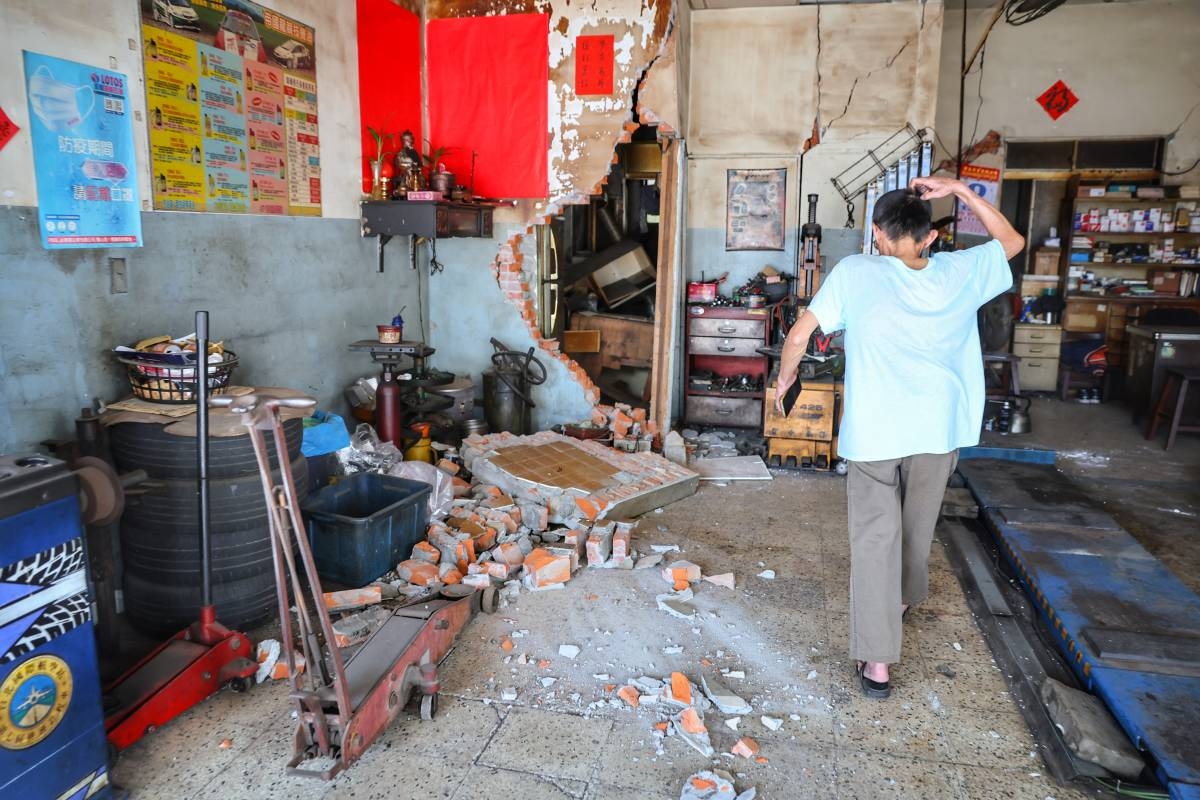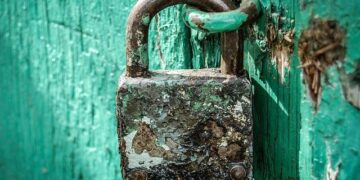TAIPEI: Growing up in Asia’s “Ring of Fire,” Filipinos are used to earthquakes. But nothing prepared me — and likely the other estimated 159,000 Filipinos that live here — to face down an earthquake for the history books — which, if it had occurred in another country — would have likely left hundreds, if not thousands, dead.
April 3 began for me as most mornings would — I ducked into the studio to prepare for the 8 a.m. newscast. But unlike most mornings, two minutes before the show began, the room began to sway ever so slightly. The swaying would come to a pause before a rumble began and the studio began to shake violently, toppling Covid-era plastic dividers, rearranging chairs, violently pushing the prompter in one direction, and the microphone in another. I had seconds to decide whether to leave the room, duck under the counter, or go on to read the news — and after I’d made that decision, I needed to catch my breath, decide whether I would mention the violent shaking without panicking our listeners, or even pretend it never happened to keep from triggering any public panic.

This photo taken by Taiwan’s Central News Agency (CNA) on April 3, 2024 shows a damaged building in Hualien, after a major earthquake hit Taiwan’s east. A major 7.4-magnitude earthquake hit Taiwan’s east on the morning of April 3, prompting tsunami warnings for the self-ruled island as well as parts of southern Japan and the Philippines. (Photo by CNA / AFP) / Taiwan OUT – China OUT – Macau OUT / Hong Kong OUT RESTRICTED TO EDITORIAL USE

Wrecked This photo taken by Taiwan’s Central News Agency on Wednesday, April 3, 2024, shows a damaged building in Hualien after a major earthquake hit Taiwan’s east. AFP PHOTO

This photo taken by Taiwan’s Central News Agency (CNA) on April 3, 2024 shows a man reacting after a brick wall in a house collapsed in Taipei, after a major earthquake hit Taiwan’s east. Photo by CNA / AFP

This screenshot taken from a UGC video handout from a user known as Way shows a firefighter running past a damaged building in Hualien on April 3, 2024, after a major earthquake hit Taiwan’s east. AFP PHOTO / UGC via user Way

This UGC handout from a user known as Way shows a damaged building in Hualien on April 3, 2024, after a major earthquake hit Taiwan’s east. A major 7.4-magnitude earthquake hit Taiwan’s east on the morning of April 3, prompting tsunami warnings for the self-ruled island as well as parts of southern Japan and the Philippines. AFP PHOTO / UGC via user Way
Given that an aftershock followed the initial quake just seconds later, I decided to go with telling people as calmly as possible that there had been a quake and that there would be aftershocks, and that we’d have more details “as they became available.” Spoiler alert: There were no details immediately after the quake. It would be minutes after the first quake — and after several aftershocks had taken place that the Central Weather Administration would confirm that the quake measured 7.4, per the US Geological Survey.
When I left the studio, I saw toppled shelves, broken glass, and displaced office furniture — the standard signs of a strong series of quakes that have come and gone. But the biggest surprise would come when I saw firsthand the offhand manner in which work friends and colleagues would dismiss what eventually became known in overseas media as “the strongest quake Taiwan had experienced in 25 years.”
Get the latest news
delivered to your inbox
Sign up for The Manila Times newsletters
By signing up with an email address, I acknowledge that I have read and agree to the Terms of Service and Privacy Policy.
Friends bemoaned the fact that there would be no official evacuation orders so they could be free to go home. They complained about having to walk up 19 flights of stairs to the office. None were traumatized or scared. If anything, as one British friend pointed out, most Taiwanese simply paused before continuing their commutes just seconds after the first quake hit.
Despite the piles of broken tile and glass television channels would eventually show — most of the Taipei I saw on my journey home was startlingly normal. No drama, no billboards on the ground, no fallen trees, no broken construction beams and equipment. It was like nothing had happened. Of course, as I would later discover, the city of Hualien would not be so lucky and even then, it seemed that all of the affected buildings had crumpled in a particular way. A friend has since told me that the crumple was part of the island’s quake design.
It’s a running joke that some of the people in Taiwan have “go bags” at home: easy-to-carry pieces of luggage filled with emergency items that range from cash and travel documents to food and water and sets of clothing. These bags allow them to flee their homes at a moment’s notice — and why not — given that the island faces threats that include typhoons, earthquakes, invasion by a hostile neighbor, or even an unexpected volcanic eruption.
But the go bags can be seen as a facade of a people who have learned to prepare for everything — and willing to face down and conquer whatever threats face their island home with a pragmatism and stoicism that deserves to be admired and emulated. (The author anchors morning news for International Community Radio Taipei)
>>> Read full article>>>
Copyright for syndicated content belongs to the linked Source : The Manila Times – https://www.manilatimes.net/2024/04/05/news/national/nothing-prepared-me-for-the-quake/1939932































